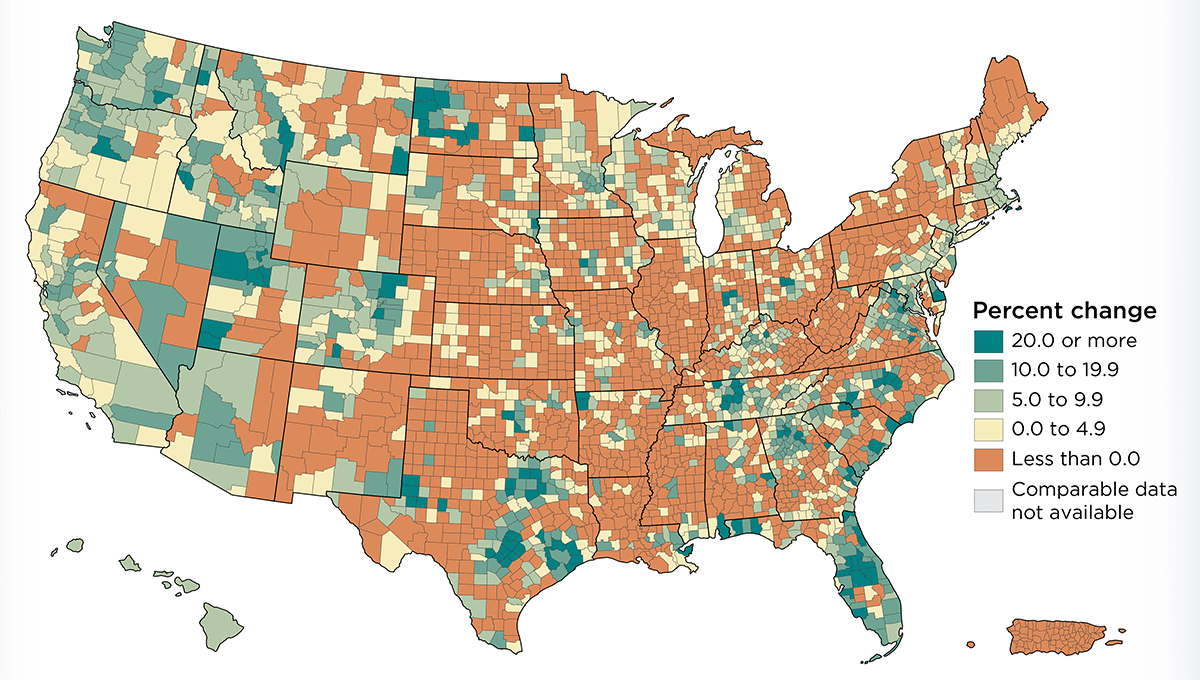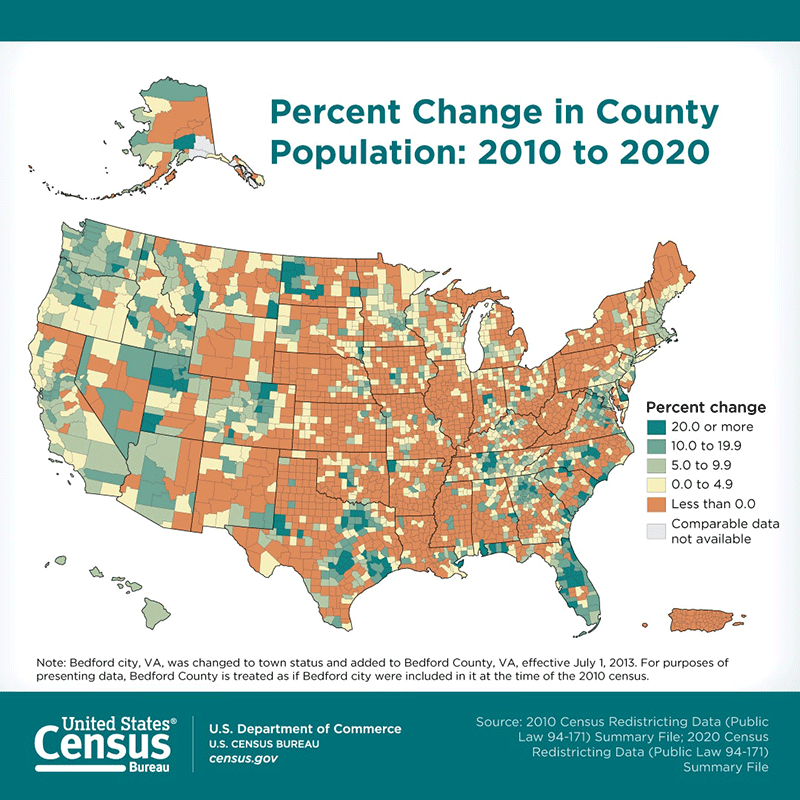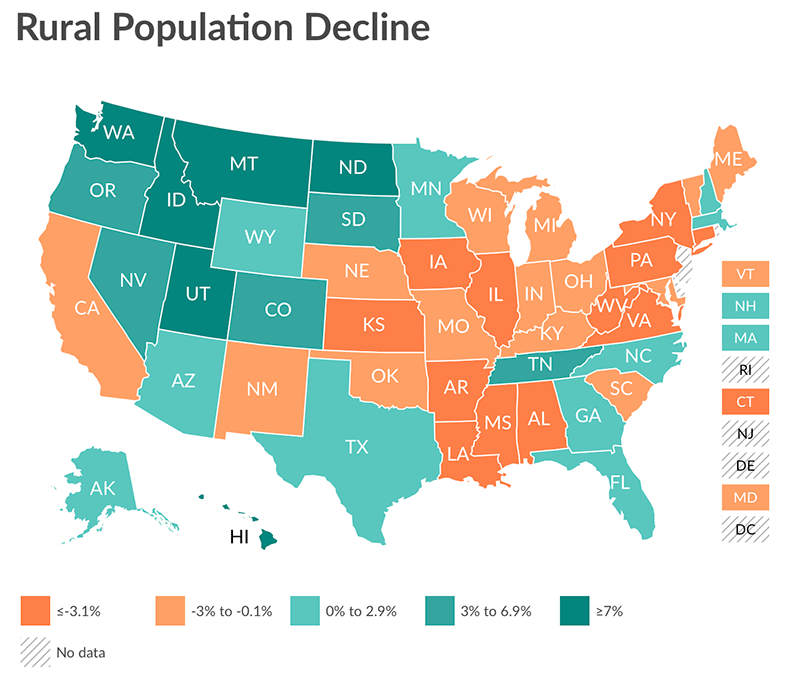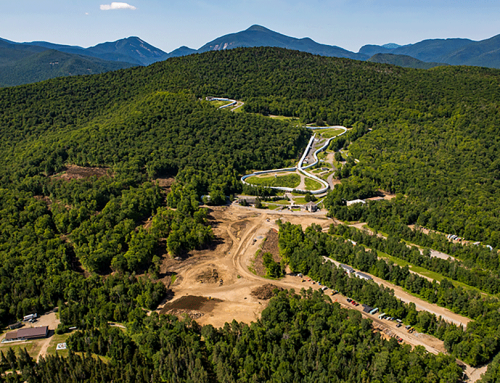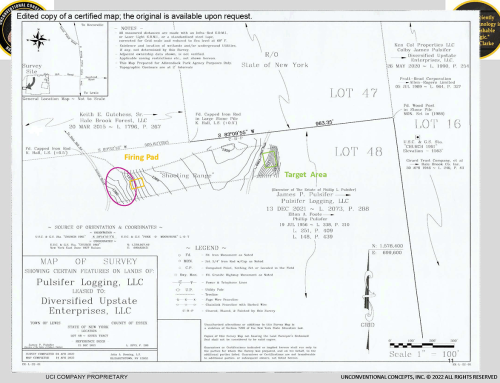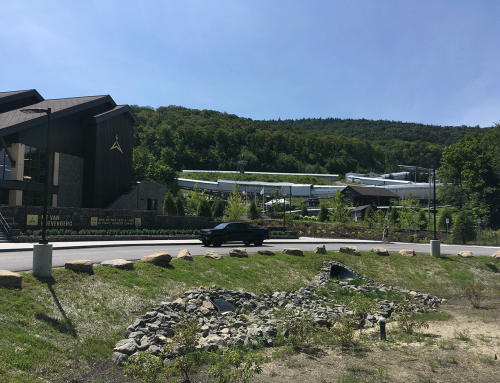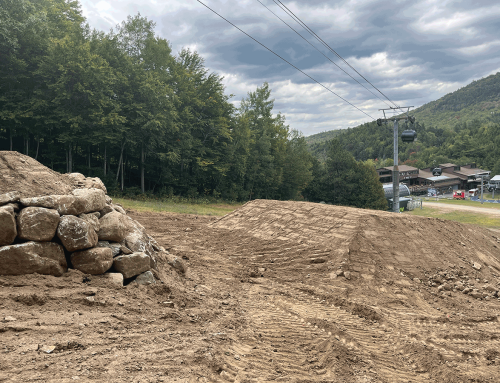Among Adirondack Park leaders, blaming the Park, the Forest Preserve, environmental protections, and environmental groups, is fashionable. Population trends are often cited, along with things like school district trends, to substantiate this narrative. Hardly ever do local leaders attempt to place Adirondack population or school district trends in a statewide or national context.
The US Census allows us to assess what’s going on in the Adirondack Park in a statewide and national context. The US Census just released its first cut of the 2020 decennial census. This data is very informative, though we’ll know more in late September when town-level data is released, and we’ll learn even more in 2022 when age and race data along with economic data is released.
The limited US Census data released tells us a few things that are important for the Adirondack Park and New York State. New York State gained over 800,000 new residents from 2010 to 2020. The actual 2020 Census count was substantially higher than the annual estimates by nearly 750,000 people, which was a pretty big discrepancy.
In New York, 39 out of the state’s 62 counties lost population, and all of them were in Upstate New York. The 39 Upstate New York counties that lost population, which includes nine of the 12 Adirondack Park counties, are part of a vast geography in the U.S. that saw population losses. The US Census reported that around 1,660 out of the roughly 3,140 counties in the U.S. lost population from 2010 to 2020, around 53% of all counties in the country. This number is unprecedented and is something that we’ve never seen before in American history.
The number of counties that saw population declines from 2010 to 2020 rose dramatically from prior censuses. For the 2020 US Census it appears that 1,660 counties saw population losses, compared with 1,082 counties across the U.S. that saw losses from 2000 to 2010. That’s a huge increase in areas of the country experiencing population loss.
In 2000, the US Census told us that 84.3% of the 282 million Americans, some 237.7 million people, lived in metropolitan areas. It increased to 85% in 2010. In 2020, the rate increased still higher to 86.3% of the 331 million Americans, 285.6 million people, lived in metropolitan areas. This was an increase of nearly 48 million people over the last 20 years, while rural areas grew by just 1.1 million people. In the last 20 years, for every 1 person that decided to move to, or get born in, a rural area in the U.S., 48 others made the opposite choice and aimed for life in a metropolitan area. That marks a continued intensification of the number of Americans choosing to live in metropolitan areas in the U.S.
The initial 2020 US Census county maps for the country tells this story (see below). Much more data will come out in the next two months that will tell us a lot more about raw population gains or losses at the town level and among rural and metropolitan counties. Once the full suite of age, sex and race data becomes available in 2022 that will provide Adirondack Park leaders with much more accurate information to assess long-term trends locally and regionally across the Adirondacks and compare how we stack up against other rural areas in the Northeast U.S. as well as the whole country. Most importantly we’ll be able to determine who it is that is coming to or leaving Adirondack communities.
The initial 2020 Census data doesn’t allow us to assess population gains or losses specifically in Rural America. In 2010, 1,941 counties were counted as rural counties. Given the population gains in and around major metropolitan areas, a handful of rural counties may have grown into a metropolitan status and were reclassified as part of the 2020 US Census. The big question will be how many of the 1,900 or so rural counties saw population gains or losses. In 2010, 47% of the counties in Rural America reported population losses since 2000, compared with 37% of all U.S. counties. While we don’t have the data, and can only speculate, given that 1,665 counties, 53% of all counties, saw population losses, it’s a good bet that there will be far more rural counties in 2020 that experienced population losses than the 941 rural counties that experienced losses in 2010.
For those who are busy crafting population recruitment strategies for the Adirondacks and North Country, the competition from other rural areas is growing in a big way. In my count of the initial US Census maps, there were at least 1,655 counties outside the Adirondacks that lost population from 2010 to 2020. That means there a lot of small towns, lots of counties, and lots of regions around the U.S. that are looking at many different ways to try and attract and recruit new residents. When it comes to population recruitment, Rural America is all singing the same song.
Across the Northern Forest, which stretches from Tug Hill in New York to northern Maine, most of the counties that are similar to the Adirondacks lost population. All seven of the northern Maine counties lost population, totaling a loss of over 12,000 people between them, though some counties saw minor losses. In New Hampshire, Coos County in the far north lost over 1,700 people, and in Vermont the three counties in the Northeast Kingdom, combined for a loss of over 1,200 people. By contrast, Cumberland County in Maine, home to the City of Portland, gained over 21,000 new residents. Hillsborough County in New Hampshire, home to the City of Manchester, gained over 22,000 people. Chittenden County in Vermont, home to the City of Burlington, gained 11,778 new residents. As we saw in a previous article, Upstate New York counties with larger cities also gained population.
Some losses and population shifts across the U.S. were truly remarkable. In Iowa, the state’s population grew by over 150,000 people, yet 68 out of its 99 counties lost population. In Kansas, which grew by over 90,000 people, 80 out of its 105 counties saw losses. In Nebraska, which grew by over 150,000 people, 69 out of its 93 counties saw losses. In Ohio, which grew by over 225,000 people, 56 out of its 88 counties saw losses. In West Virginia, 47 out of 55 counties saw declines as the overall state population dropped. In Illinois, 87 out 102 counties saw losses, as the overall state population dropped. In Mississippi, 64 out of 82 counties saw losses, as the overall state population dropped. The U.S. has never had three states lose population before in a decennial census.
One general rule of thumb in the initial 2020 US Census numbers is that small population counties with 50,000 people or less mostly lost population and high population counties gained. The 10 biggest population centers in the U.S. all gained population from 2000 to 2010. It appears that the trend of population increases in metropolitan areas is accelerating and intensifying.
The 2020 Census data was largely gathered at the beginning of the COVID19 outbreak, which as we all remember, began in pockets of the Pacific Northwest and Northeast USA before spreading to the whole country throughout 2020. There’s lots of anecdotal information about the effects of the COVID19 pandemic on the decisions of Americans about where to live, but we do not have a lot of concrete data on permanent changes. While outdoor recreation numbers jumped along with the number of short-term rentals in rural areas in 2020, whether COVID19 has changed school populations or boosted rural populations are open questions.
To confront the major issues facing rural areas like the Adirondack Park we need to get beyond blaming the Adirondack Park or the Forest Preserve or environmental protections for our population challenges. I’m pretty sure that there was no APA and no forever wild Forest Preserve in the more than 1,655 counties across the U.S. outside the Adirondack Park, over 50% of all counties in the U.S., that experienced population losses over the last ten years.
There are many places across the U.S. that are in the same boat as many Adirondack communities. Our landscape combination of mountains, forests, and abundant water may be unique, but there is nothing unique about the population challenges that we face. It’s simply the reality of Rural America in 2020.
The challenges facing Adirondack communities should be seen as part of a larger trend facing rural areas in the U.S. and not something driven by particular state policies. The Adirondack Park has long suffered from a misdiagnosis of the causes of our population challenges, which has led many to chase false solutions.

